Imagine Worship
COVID-19. Racism. Social unrest.
In summer 2022, when a University of Georgia poll asked if things in the nation are generally headed in the right direction, almost 80 percent of respondents said they were off on the wrong track. In chaos, fear can easily take hold.
But there is hope, front and center at a new worship experience that blossomed from the isolation of the COVID-19 pandemic. Imagine Worship brings together the best parts of Episcopal liturgy, worship, and technology with cinematic camera work, professional sound engineering and sharp video editing. Recorded live and an online premiere weeks later, it invites anyone and everyone to move and be moved by contemporary music, inclusive language and messages of love and hope.
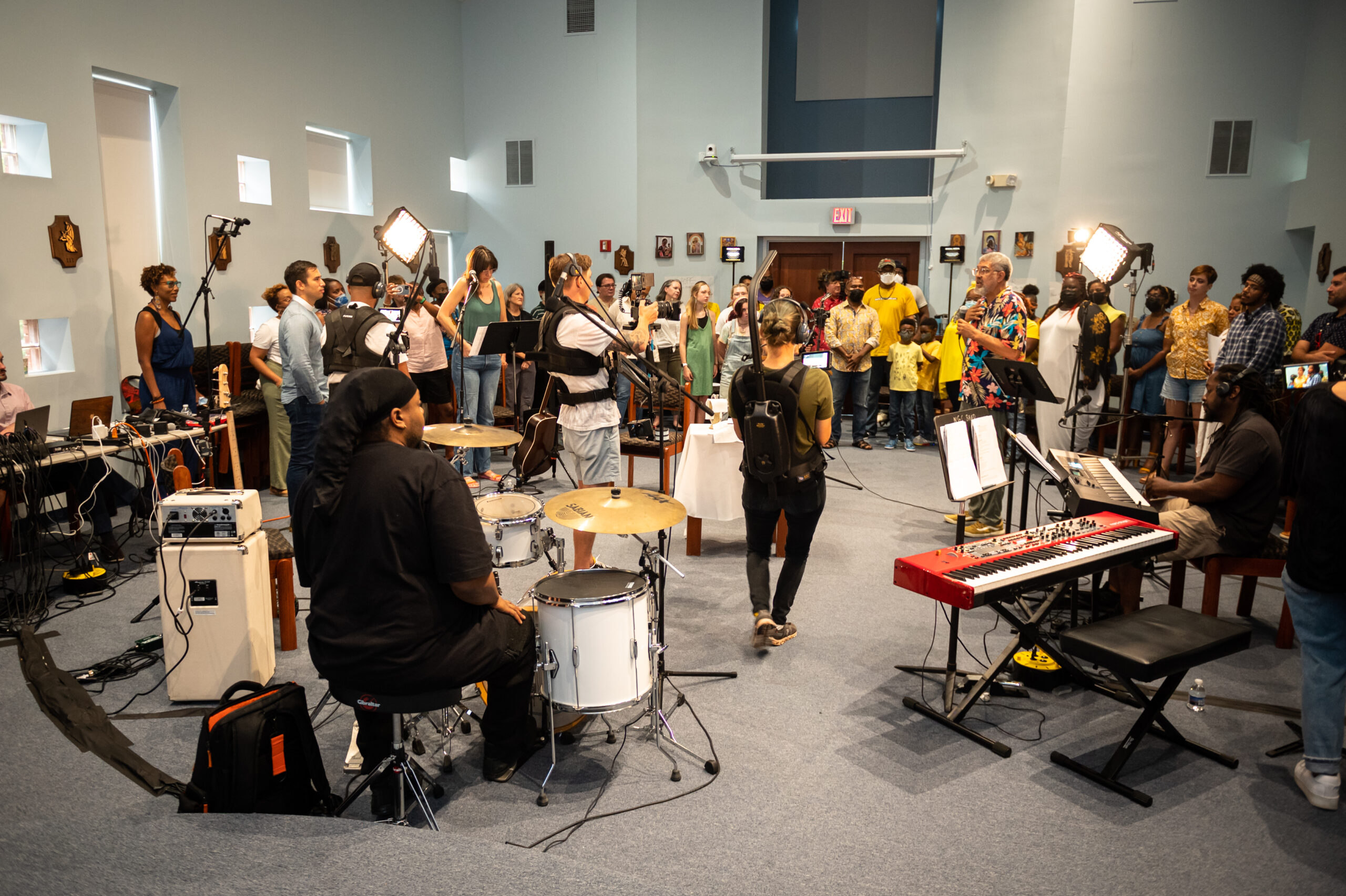
When Imagine Worship recorded at the Absalom Jones Episcopal Center for Racial Healing in late summer 2022, a gospel choir got everyone on their feet, sweating, clapping and raising hands. The video and audio would be edited and premiere a couple weeks later. A new audience that has surfaced from the spiritual wilderness of the pandemic, seeking new streams of inspiration.
“We get cards or letters or emails from people, and they’re telling us that they ‘don’t even know what Episcopal is, but what you had to say to us blessed my soul, transforming me and sending me back to the church, and helped me find a community,’” Bishop Rob Wright said in greeting the worshippers at the Absalom Jones Center. “Be mindful of the blessing that you all are to somebody that you don’t even know.”
You don’t see lecterns at Imagine Worship, just people talking at eye level. The message and language is plain, accessible, fresh.
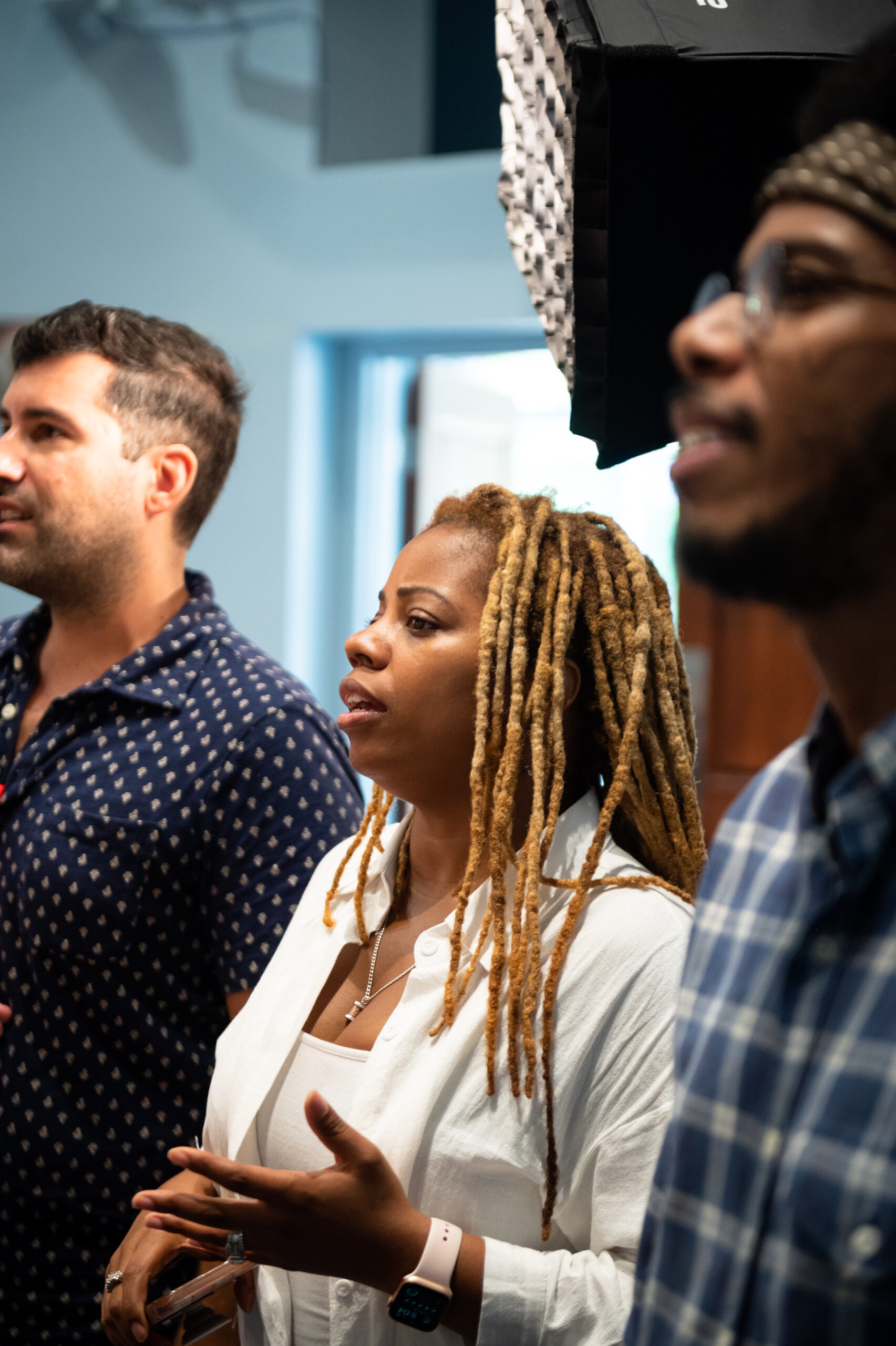
“Everybody in this room has something somewhere that causes you to be afraid,” Dr. Catherine Meeks preached informally at the service, from her spot in the haphazard circle of congregants who filled the chapel.
“The way that you deal with whatever fear you have is to look inside yourself, to interrogate yourself, to see what you need,” she said. “If you don’t do this inner work, you will never do anything that’s worth talking about. Because you will always be operating out of a space where you don’t know who you are. The basic bottom line about fear is you don’t know who you are. You don’t know what your core is. You need to introduce yourself to yourself.”
Old and young, across races, gender and abilities, the worshippers were invited to an act of bravery: to find someone that they didn’t know, and share themselves. What are your fears? Where do you find hope? What are the core things that you hold on?
Imagine Worship Director of Worship, The Rev. Zack Nyein, reinforced the message in the eucharist.
“Even when we hide our faces and fear and shame, still you run after us, sending angelic messengers to light with words of comfort and joy,” he said. “In the face of enemy armies, raging seas, unplanned pregnancies and empty tombs, their message remain the same: be not afraid.”
Participation in religious services plummeted during the pandemic, and the path to recovery appears steep across denominations. A 2022 Pew Research survey over a six-month period showed a plateau: little or no rise in the number of people attending in-person services, while online viewers remained steady. That number is around 27%, an extraordinary drop from the 67% who typically attend services.
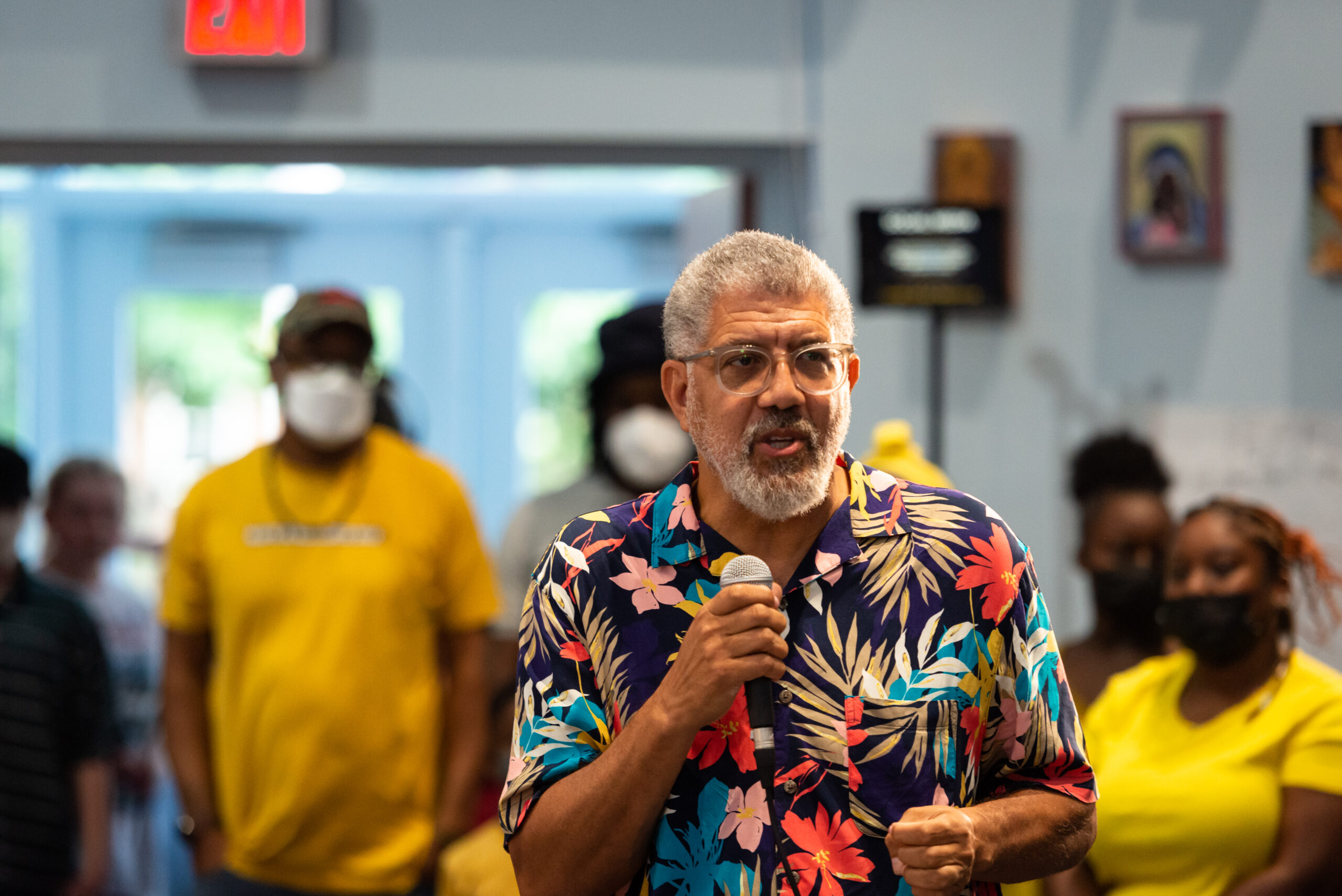
Imagine Worship bubbled up from a dream that kept bothering The Rev. Canon John Thompson- Quartey with a message that the Rev. Dr. Martin Luther King Jr. famously had wrestled with: Why is Sunday worship the most segregated hour of the week?
“What can we do to create a community of faith that really breaks down this barrier of separation?” he asked. “We know that we are naturally drawn to each other, so how can we break this cycle?”
The experiment was on.
“Really, we’re taking something very old that is our spiritual tradition and making it new for the next generations and for the neighbors that we haven’t met,” Nyein said. “In some ways, it was a low-stakes experiment because we don’t have a pre-existing congregation. We didn’t inherit any traditions or people or baggage.”
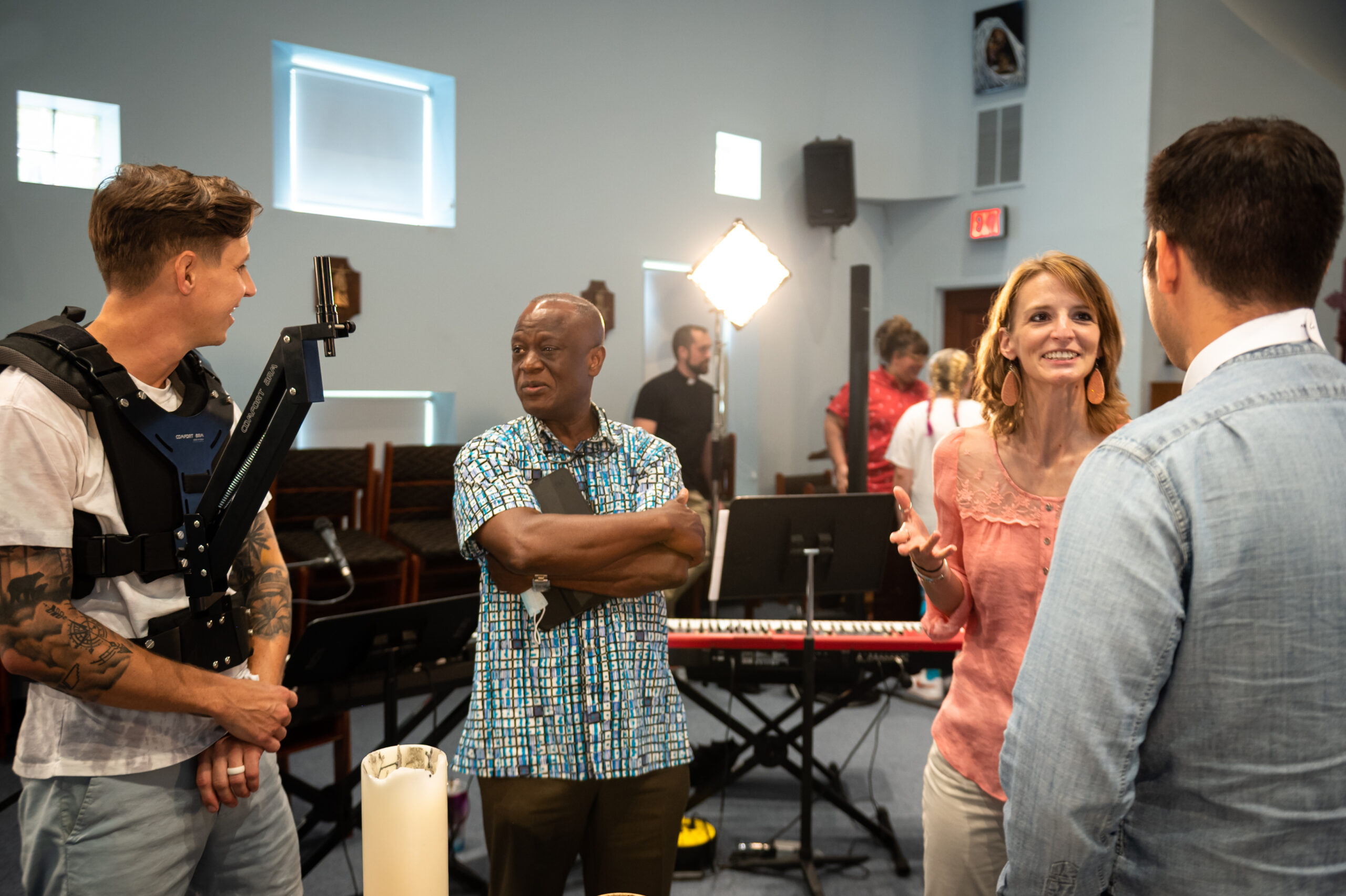
The new vision forced Nyein, then associate rector at All Saints’, into new territory. It was up to him to cold-call musicians around Atlanta and sell them on the vision. He had to overcome his own reluctance about new technology.
“I think I’m a less self-conscious person now through Imagine Worship,” said Nyein, now senior associate rector at St. Bartholomew’s New York. “We’re uninhibited. We’re raw. What you see is what you get.”
Imagine Worship’s momentum depended on embracing people of all kinds with a “love like Jesus” message.
“When we gather people of diversity and we honor God and neighbor through diversity in worship, the Holy Spirit moves—and is moving— in this space,” said Easton Davis, Canon for Communications and Digital Evangelism, who is responsible for the professional production of Imagine Worship.
The results are working for Vantione Lael, a drummer who sometimes lays down the beat for Imagine Worship. He grew up in historically black Christian denominations, but became disillusioned and left.
“I love this though,” he said. “There’s not too many churches where you go to where you see a lot of different races and ages. Most churches are boxed in to specific ages or race. I’ve never felt like that here.”
Imagine Worship is inviting Christians to feel more comfortable, and non-Christians to feel welcome, at a time when those feelings are in decline nationally. A March 2022 survey by the Episcopal Church found striking differences between how Christians and non-Christians perceive Christianity in this country. Christians, for instance, use words like “loving” to describe themselves. Non-Christians choose descriptions like “hypocritical.”
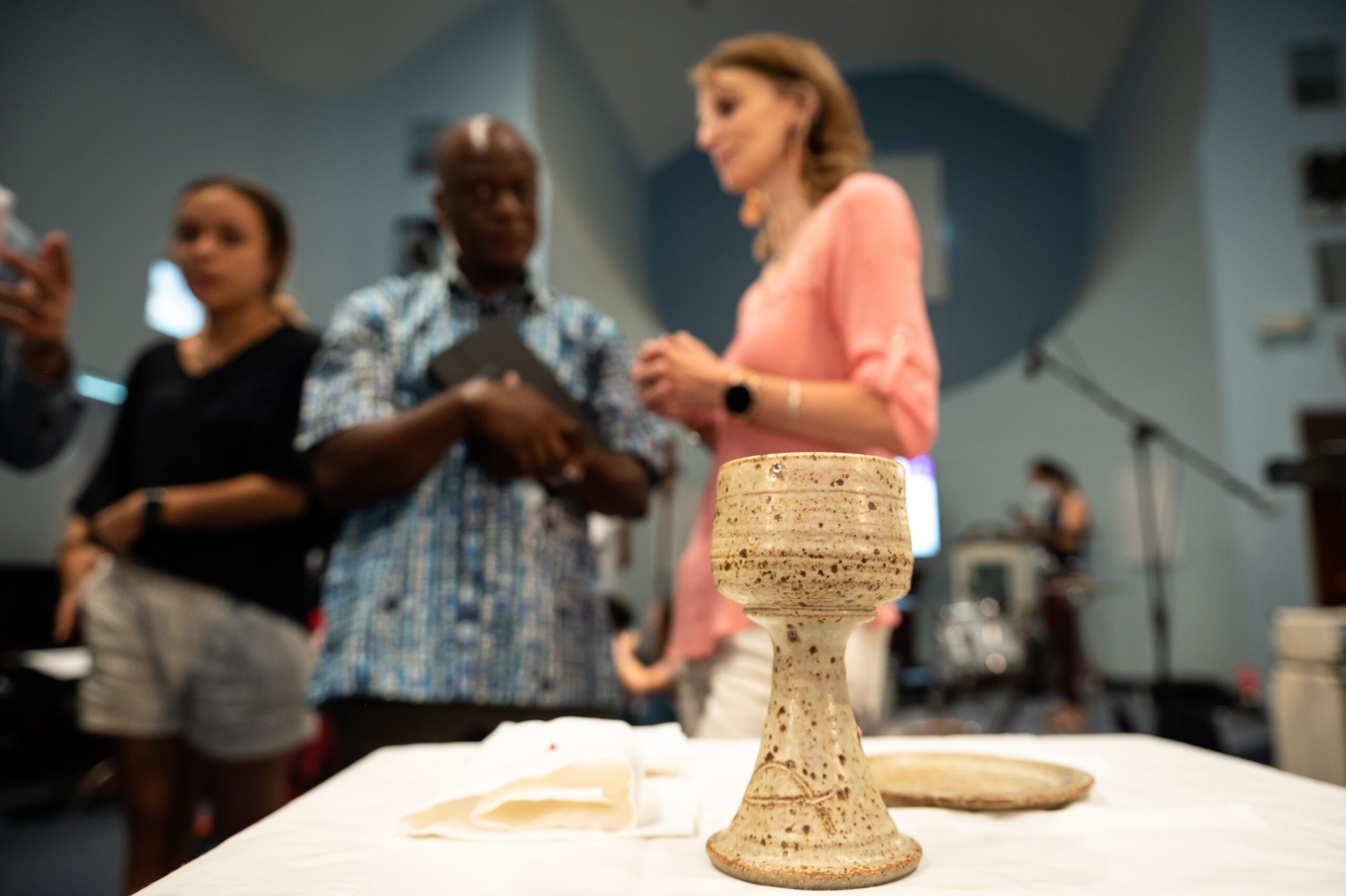
Imagine Worship appeals to young cradle Episcopalians seeking ways to align themselves with a Christian narrative that is true to them. Bobby Kidd, 16, found it impossible to keep from dancing and clapping for most of the service at the Absalom Jones chapel.
“Especially nowadays, there’s a lot of Christians who use the Bible as a weapon,” said the Cambridge High School student who serves on the Diocesan Youth Commission. “But in reality, what we believe is something far bigger than any of that. God is just love and Imagine Worship represents that on such a fundamental level. You can really see the love and joy, not this evil kind of God that a lot of people tend to talk about.”
Generation Z (born after 1996) is pushing churches and society into new directions, noted Holle Tubbs, the Youth Missioner for the Episcopal Diocese of Atlanta.
“We don’t want to lose those songs from 300 years ago that we still sing today, but the youth have music today that speaks to where they are,” she said. “They are part of this movement that is saying, ‘This church isn’t going away, but we’re not going to just settle for being inclusive. We’re going to be expansive, and we want to bring different styles and different perspectives. Gen Z is in that water all the time, and I’d say they’re experts on it. So we partner with them as much as we can in bringing new forms of worship to the church.”
Organized religion has disaffected many people. Imagine Worship is drawing them back. One of them is Chanda Leigh, a musician for Imagine Worship. The daughter of a Baptist preacher, she “had the longest fingers of all the kids and that’s why my dad said I was gonna play piano when I was seven.” But she had left that role behind when anyone asked.
“I’m a jazz musician,” she told a neighbor who approached one day at her mailbox in 2004. That neighbor was Bishop Wright, who asked Leigh to play at St. Paul’s, where he was then rector. Her gig there lasted a decade.
When Imagine Worship kicked off, she was a natural go-to. Performing online forced her to emote without audience feedback, so that was a new thing. “It was like, ‘I’m going to lay it all out here’ and pray that people get some kind of blessing from it,” she said.
At Imagine Worship, Leigh plays from a place of new freedom beyond labels and denominations.
“I love that I can be right here in this conversation right here in this space, right here with these amazing people and I could turn around and hang out in the synagogue or temple, or do yoga and meditate and just go wherever spirit is,” she said. “For a long time, I thought that had to have a label. I believe I’m here because the warmth and friendliness at St. Paul’s healed that conversation and left me with an open heart. It doesn’t matter what you call it when you feel it, I feel it. I mean, we’re both crying.”